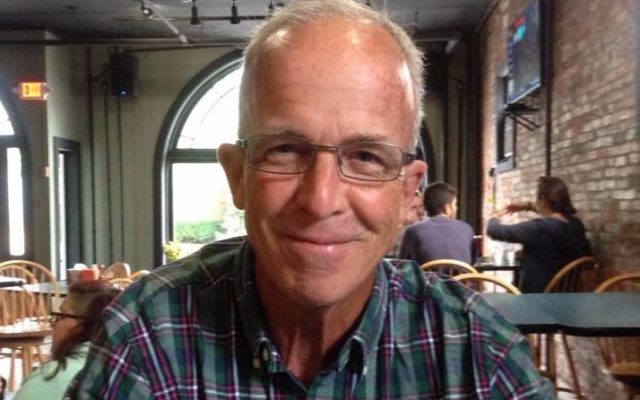
My heart attack
To park on the street I turned my car steering wheel right and felt a new chest pain. “Heart,” was my first instinct. But, since I have never had heart problems, I considered other possibilities like indigestion.
By nightfall my chest pain subsided or stopped. I slept until 4:01 AM when my chest hurt again. I went downstairs, showered, dried myself and sat on our couch.
The chest pain remained.
I awakened Eileen who was an Emergency Medical Technician (EMT). Eileen suspected I was having a heart attack. She checked my vitals and called the volunteer Turner Maine Fire Department Rescue.
I washed down two chewed aspirin with water. Then a pair of Turner Rescue Paramedics were escorting me from living room to ambulance. I laid back on a gurney/stretcher. They wired me to an EKG machine, inserting an IV in my right arm. One Paramedic radioed Central Maine Medical Center’s Emergency Room with information needed for my arrival.
Then we hit the road, Eileen following in her Honda.
CMMC’s ER team, upbeat and professional, asked me to rate my chest pain on a 1-to-10 scale. I said, “4.5”
Within 15-20 minutes I was traveling CMMC’s hallways on a gurney to the Cardiac Catheterization (Cath) Lab procedure room. Cardiologist Dr. Higgins greeted me with a Steve Martin smile and hello. I liked him right away. While Dr. Higgins’s amazing team prepped my body for the procedure, Dr. Higgins explained to me what was happening and why.
Plan A? Snake a wire with a micro camera through my right arm artery to my heart to see what had gone wrong. The cardiologist spotted one fully blocked artery. My other arteries were good. The cardiologist sent a balloon traveling along the wire to open the blockage. He then inserted a metal alloy stent to allow blood to pass unimpeded.
I rolled into CMMC’s emergency room and rolled out of the Cath Lab in 90 minutes. Starting with actions taken by Eileen and the Turner Fire Paramedics, Dr. Higgins said mine was a “textbook case” on the right way to handle a heart attack.
A critical care single stay bedroom was my home for the next day. Post stent my heart was monitored 48 hours. Our bodies try to get rid of foreign objects, including life-saving stents. My torso and arms were wired to a telemetry cardiac monitor to see when (if?) my heartbeat settled into a regular healthy rhythm. At first, responding to the stent, my heart sometimes improvised rhythms. The cardiac monitor beeped until my heart was keeping steady time.
My first night in recovery, my hospital gown left my back exposed and cold. I was not having much luck trying to put on a hoodie over my attached wires. An RN came quickly into my room asking, “What are you doing?” My wardrobe malfunction appeared on the nurse’s cardiac monitor as if I was having a major heart attack.
“How about if I just get you another blanket?” she asked.
By the second day I was wired to a pocket size cardiac monitor and moved to a new floor and room with patients 18 months to 98 years old. I heard an infant a few times. During my stay I saw different nurses, around the clock, tending to this tiny baby; holding her wrapped in a blanket, patiently working to help the baby eat, which it was unable to manage alone.
After 48 hours my heart rhythm was “fine.” I was discharged. Eileen took me home.
All the CMMC personnel taking care of me were wonderful. The RNs, the techs, sonographer, phlebotomists, dietary aides, nutritionist, and chaplain — tremendous people. I always asked their names and about their work.
God bless them all for what they do for us.
Scott K. Fish has served as a communications staffer for Maine Senate and House Republican caucuses, and was communications director for Senate President Kevin Raye. He founded and edited AsMaineGoes.com and served as director of communications/public relations for Maine’s Department of Corrections until 2015. He is now using his communications skills to serve clients in the private sector.